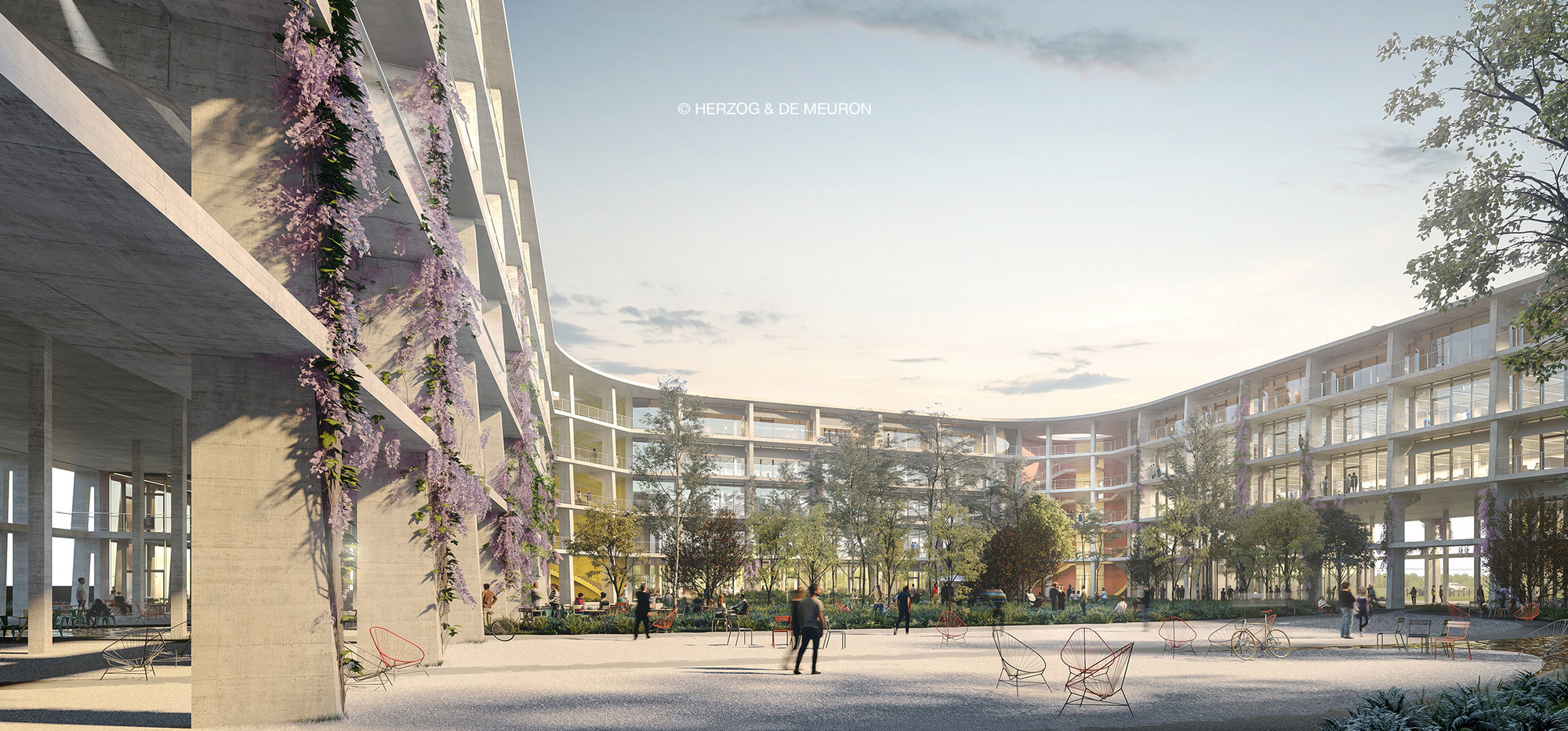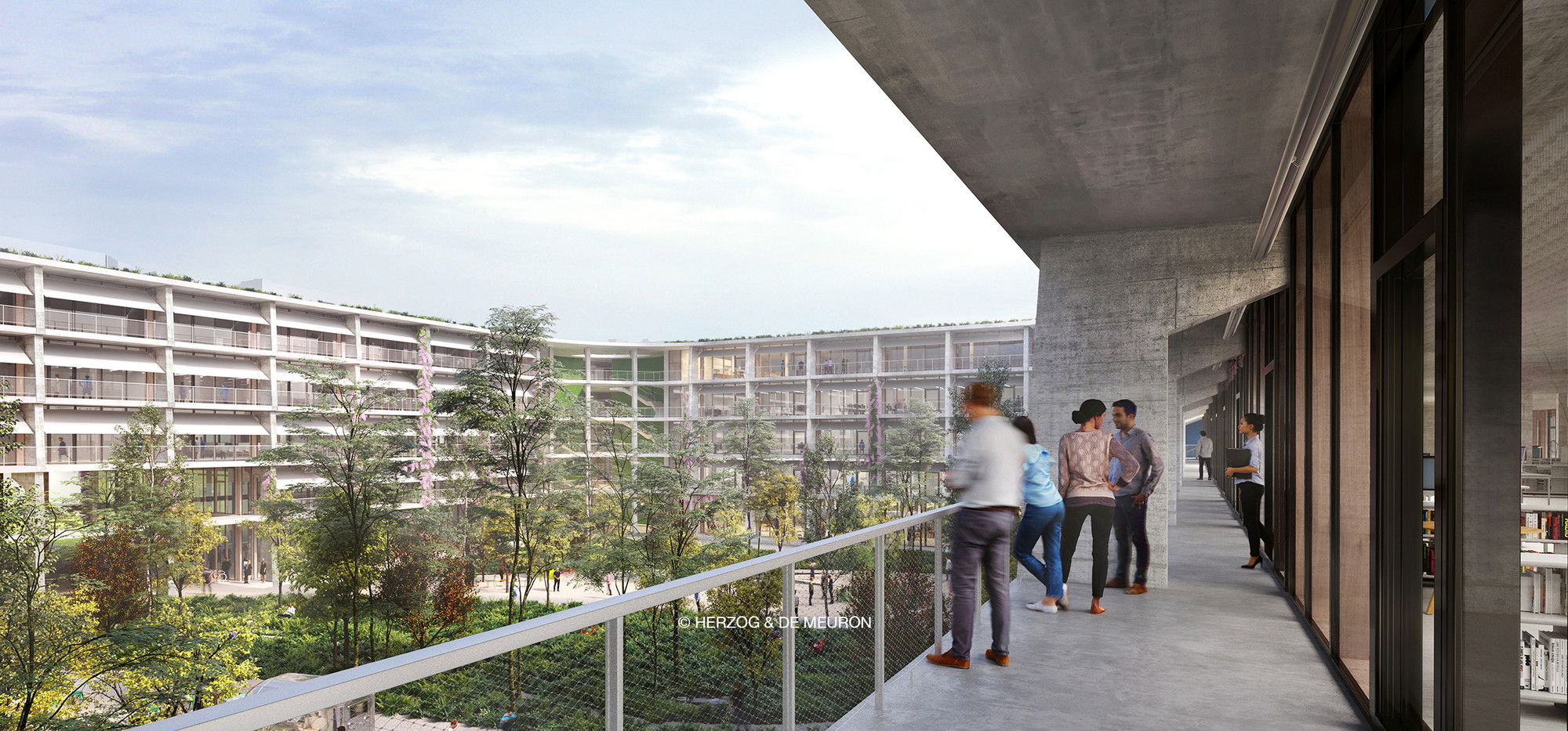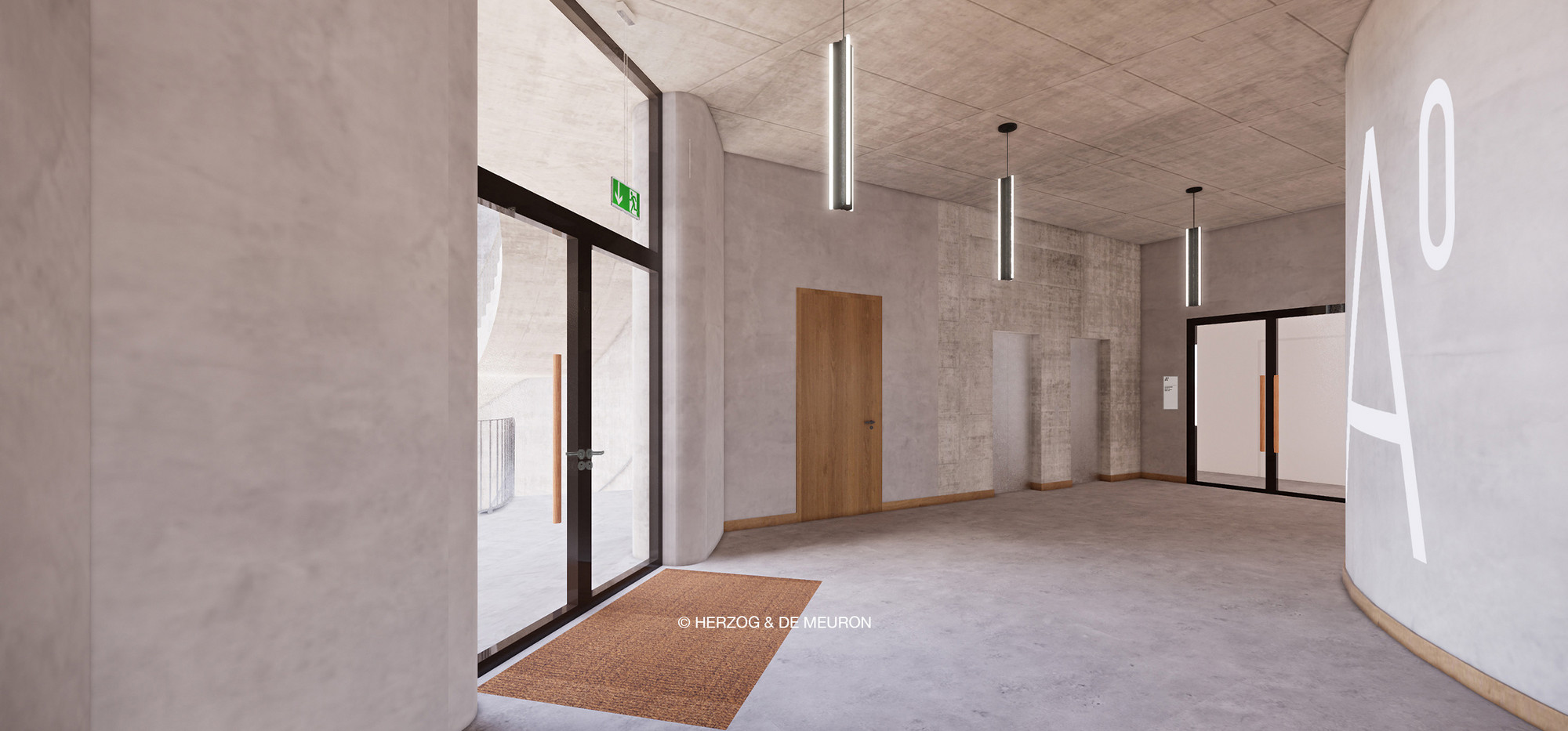“Every workspace requires an idea”
Senn, the multi-award-winning real estate development firm from St. Gallen in Switzerland, has made it their mission to create people-friendly and stimulating work environments. Gaby Senn, interior designer and sales manager, knows that sustainable agile working methods require flexible, convertible office spaces.
There are many changes in the work environment—and they are happening fast. It’s not only the working hours that are getting more flexible, but also the workplace. Fixed workplaces are now rare and remote work is gaining more and more acceptance. To ensure that no one feels lost in an empty office, spaces must be adaptable and attractive. “Serendipity” is the crucial concept that is meant to make office environments successful by fostering chance encounters and spontaneous discussions. Many of the development projects initiated by Senn show how a workplace can encourage such beneficial encounters.
Purposefully fostering serendipitous encounters
“Every development—from sites to buildings to workspaces—requires an idea,” says Gaby Senn. Together with architects Herzog & de Meuron, they are planning and realizing the project Switzerland Innovation Park Basel Area Main Campus. The new campus convinces, for example, with a concept that brings together life science start-ups with time-honored healthcare institutions. Its architecture facilitates exchange through shared outdoor areas and office spaces as well as gastronomic venues. This is where the student meets the pharmaceutical executive. “Because in the long term,” says Senn, “only interesting, lively workplaces that stimulate exchange can survive.”
HB-Therm in St. Gallen, a leading manufacturer of temperature control units, has fully embraced this. The new company headquarters accommodates all areas—from production to administration. Such “fluid workplaces” have the potential for random, serendipitous encounters. That explains why Swiss design icons Freitag and Aroma have settled in the NŒRD commercial building in Zurich Oerlikon which provides exactly this type of lively and fertile environment. Here, the creative people draw inspiration from the work of others, exchanging ideas in the canteen, which is open to all employees at NŒRD as well as to the public. Thanks to these touchpoints, serendipity comes into play, promoting a creative industry ecosystem.
Enabling change for future generations
Modern workplaces must accommodate the ever-changing needs of a huge variety of people. Using mobile sliding walls rooms can be scaled to any team size and spontaneously rearranged to suit different requirements. In this way, an office can serve as a cozy retreat in the morning and as a large meeting room in the afternoon. An advantage that not only has a positive effect on daily planning, but equally on the use of a building over many decades.
Sustainability is a big topic for the Senn family business, which has been operating since 1965. The project planners are tasked with designing workspaces that will continue to be attractive for future generations. In doing so, they must develop a clear idea of who exactly will be working in these spaces. “That’s the only way we are able to develop a concept that can adapt to future needs and leave room for parameters that are as yet unknown.” Concretely, this means: Structural and building plans must not be restrictive since this would make it impossible to repurpose the building at a later date. In the inner cities, it should even be feasible to convert office buildings back into residential buildings. Special attention must be paid to the load-bearing elements. For example, load-bearing stair cores or facades provide greater flexibility than load-bearing structures in the middle of the building.
The flexible workplace will prevail
Gaby Senn thinks it’s difficult to judge whether the end of the covid pandemic actually marks the apex of these changes in the workplace. Most, if not all, companies have by now recognized the irreversible signs of the times and are acting accordingly. “As a consequence, a flexible workplace will prevail wherever it is at all possible,” she insists, “after all, a change in mobility and climate protection go hand in hand. And in the end, that's what we're all working towards. No matter where we work.”
Pictures: © Herzog & de Meuron
Author: Stephanie Kleinlein
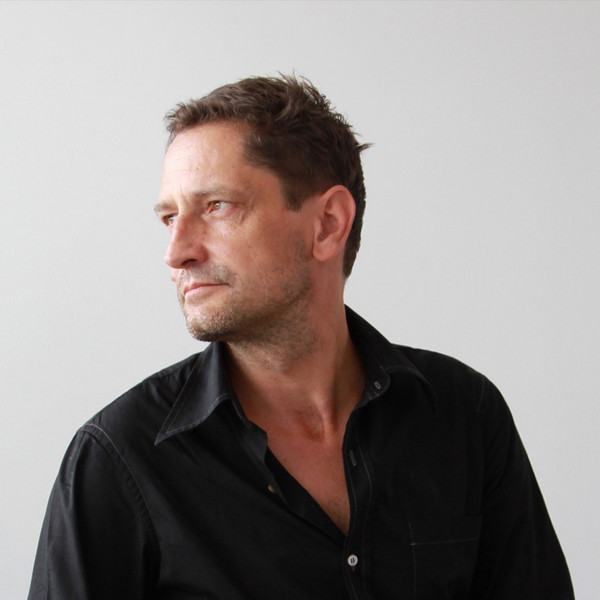
Flexible living spaces
Because so many people have spent more time at home in recent months they are now more demanding when it comes to their living space. And yet, apartments are getting smaller and smaller, with increased density. We spoke with Dominique Salathé, professor of architecture at the University of Applied Sciences and Arts Northwestern Switzerland and owner of Salathé Architekten Basel, about how these two trends can be reconciled and what the future holds for open-plan living spaces.
Read the article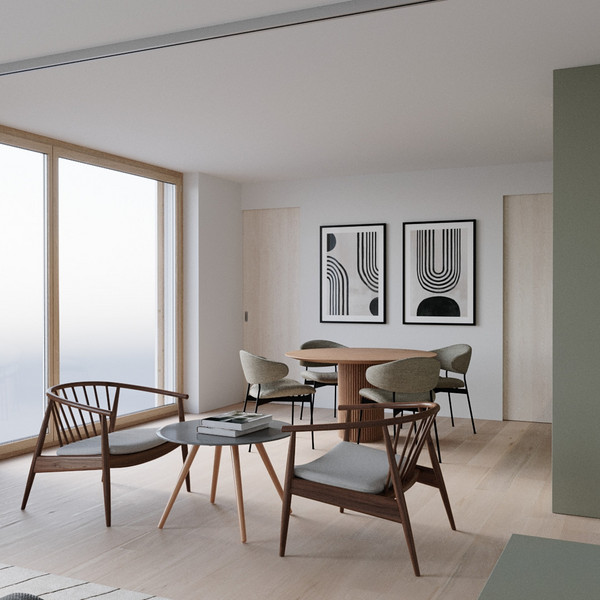
Little space, lots of possibilities
Flexible solutions allow you to make the best of even a tiny apartment. As is shown in our fictional example with Kim and David. They are representative of many young couples who have fulfilled their dream of owning their own home. 58-square meters—that’s their little paradise.
Discover the apartment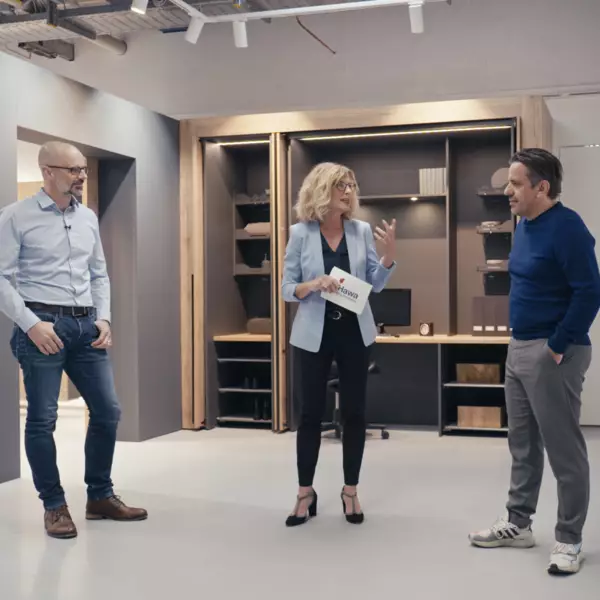
Expert meeting: This is how we will live and work tomorrow
Raphael Gielgen, the trend scout of furniture manufacturer Vitra, visits Markus Föllmi, the innovation director of Hawa Sliding Solutions, in the development laboratory. Experience the meeting of smart minds and find out how you can track down megatrends – and which developments are turning our living and working spaces upside down.
Watch interview